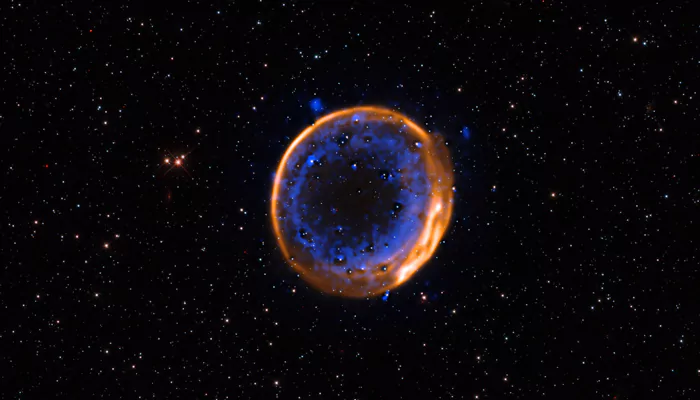
Here are today’s most important updates from the realm of Science and Space.
Astronomers have discovered what seems to be a new "jellyfish" galaxy about 12 billion light-years away from Earth using high-resolution imaging from the James Webb Space Telescope (JWST). The galaxy appears to have tentacle-like trails of gas and stars jutting off from one side, likely making it a jellyfish galaxy — a class of galaxies that drip tendrils of star-forming material as they swim through space. Jellyfish galaxies develop their tentacles as they undergo a phenomenon called ram pressure stripping, which happens when a galaxy moves through the dense medium between other closeby galaxies within a galaxy cluster. This movement eventually pushes some gas and stars out of the roaming galaxy, leaving them to trail behind. These tentacles sometimes trigger a large number of stars to form. Jellyfish galaxies provide a way to study galaxy evolution and star formation.

(Credit: ESO)
In a first-of-its-kind observation, astronomers have obtained the visual evidence of a star dying by double detonation, when stars are known to disappear by giant explosions. The European Southern Observatory’s Very Large Telescope has studied the centuries-old remains of supernova SNR 0509-67.5 to confirm the patterns of dual explosion. The back-to-back explosions obliterated a white dwarf that had a mass roughly equal to the sun and was located about 1,60,000 lightyears from Earth in the direction of the constellation Dorado in a galaxy near the Milky Way called the Large Magellanic Cloud.

A recent study has shed light on why the planet remained trapped in extreme heat for millions of years after a mass extinction. It was the Permian–Triassic Mass Extinction, or the “Great Dying,” occurred around 252 million years ago and wiped out nearly 90% of life on Earth. Scientists have long linked this catastrophe to massive volcanic eruptions in Siberia that released huge amounts of greenhouse gases, causing runaway global warming. The extreme heat didn’t subside when the eruptions ended. It lingered for five million years. The massive collapse of land vegetation, especially in tropical areas, led to very low carbon absorption by plants. Without enough greenery to pull carbon dioxide out of the air and store it in the ground, CO levels remained sky-high, and so did global temperatures. Once again, the planet may be approaching a tipping point and what happened in the past could happen again if natural systems that trap carbon are allowed to fail.

Recent genetic analysis of an ancient Egyptian man, who lived at the time the first pyramids were constructed, has uncovered significant ties with Mesopotamia, offering fresh insights into cultural interconnections during the Old Kingdom period. The man's genome, remarkably preserved due to his burial conditions, indicates that a fifth of his genetic ancestry can be traced back to Mesopotamia, suggesting substantial historical interactions between these civilisations. The discovery builds upon existing archaeological evidence of trade and cultural exchanges between Egypt and Mesopotamia, including shared artistic motifs and imported goods like lapis lazuli. Details of the man's life suggest he may have been a potter, inferred from muscle markings on his bones. Despite a physically demanding life, his high-status burial suggests he was a potter of significant renown.